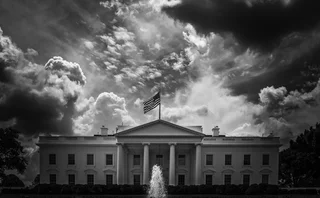
Q&A: Shell Energy North America's president, Frans Everts
After being appointed president of Shell Energy North America last June, Frans Everts is now getting to grips with both new markets and new regulations. He talks to Pauline McCallion about the Dodd-Frank Act and his outlook for natural gas and carbon trading in the US

Shell Energy North America's new president cut his teeth in the energy sector as a crude oil trader, managing the exposure of one of the world's largest refineries, Shell's Pernis Refinery in Rotterdam. "After graduating, I very much wanted to join an industry that mattered, that was important and that operated on a global scale and energy certainly fits that bill," Everts says of his decision to take a job with Shell more than 20 years ago. He has worked for the company ever since. After this initial exposure to the world of energy trading, Everts worked in a number of countries, always on the downstream side of the business. After a stint in London as vice-president of strategy for Shell's downstream business, Everts moved to the US in 2007 to run one of the company's global lubricants businesses from Houston, Texas.
As well as power and environmental products, the Shell Energy North America portfolio also includes natural gas - a new sector for Everts, and one he is keen to experience. "I'm very excited about it because I think there is a lot going on in the market and certainly a lot of growth," he says. In addition to tackling new energy markets, Everts will also lead one of North America's most prominent energy marketing and trading outfits through what is likely to be a period of significant market adjustment in the wake of the 2008 global financial crisis and the accompanying regulatory reaction in the US, which has taken the form of the Dodd-Frank Wall Street Reform and Consumer Protection Act. Regulators began work on this intricate web of rules in 2010 and it must be understood and navigated by all companies in the energy trading space, regardless of their status under the Act as swap dealers, major swap participants or end-users. While exact definitions have yet to be finalised by regulators, players such as Shell must stay abreast of the ongoing rule-makings related to the legislation to adapt in time, and not only comply and survive, but also thrive in the new regulatory order.
Q. How has the Dodd-Frank Act, designed to regulate over-the-counter derivatives trading, impacted your business so far?
Frans Everts: We've been monitoring the whole Dodd-Frank process for quite some time now. We, of course, don't know all of the rules yet, although some of the requirements – such as the rule on anti-disruptive trading practices – are already effective and we are of course complying with those. But it's also fair to say that there is a little bit of a wait-and-see approach in terms of what all of the final rules are going to be and all of the different intricacies that will come from that.
Some of these rules are going to come out over a significant period of time so it's going to be hard to see the total picture for quite some time. And we're still quite concerned about the sequencing of the rule-making process, as well as the potential unintended consequences of these rules for the market.
Q. What, exactly, are your concerns in this respect?
A. It is clear that these rules are going to come out over several months... and it will be difficult to comply with many of the rules when product and entity definitions have yet to be finalised. We don't know with certainty what transactions are going to be considered swaps or even what entities are going to be categorised as swap dealers. If the CFTC [US Commodity Futures Trading Commission] doesn't get the sequencing of these rules ‘right' it will exacerbate the potential for unintended consequences, including unnecessarily high costs and compliance risks if companies are required to conform with the new rules without adequate time to prepare. The prolonged uncertainty complicates planning and may make some parties less willing to enter into swaps, reducing market liquidity.
Q. Are you concerned about the potential impact on smaller end-users? That is, how it might impact your business, if they aren't fully prepared?
A. Yes, I see that risk and we are doing a lot at Shell to reach out to customers. Education is not the right word, but we are trying to at least increase awareness. We recently hosted a relatively large customer forum in Houston with several hundred participants. We have also held calls with our customers to try to explain our perspective of what's going on and what areas they might want to consider examining for potential impacts.
Of course, I can't really speak to what other companies are doing specifically, but we do see that there is a group out there that - I wouldn't say they are in denial - but they are hoping this is not going to touch them and I think some of those entities may really be in for a bit of a surprise.
Q. In your opinion, is there any way of escaping issues such as the difficulties of sequencing and possible unintended consequences, considering this is such a significant body of rules?
A. We are a large physical player and that's the core of our business, but it's obvious that some of these rules and regulations are going to impact us one way or the other. In fact, I believe quite a number of smaller players, our customers even, may think they will not be impacted but they very well may be; by some of the definitions, for example. Even end-users that are exempt under the legislation may still find there are a lot of implications in terms of reporting, for instance.
I think this is going to impact a number of areas of the market and everyone will have to work very hard to really understand how the regulations are going to work out. Some companies may take different tacks to deal with this, but we intend to comply with all of the rules.
Q. Have you identified any benefits stemming from your position as such a large physical player, particularly compared to financial players in the market?
A. There may be benefits, we don't yet know. I think the new rules will pose different challenges for different types of players and then obviously there will be opportunities too. We will look for those places where we can add value for our customers. But it's a little early to say.
Q. The issue of the impact of futures market activity on energy prices has hit the headlines again recently as the market awaits a rule on position limits for certain energy contracts from the CFTC. How do you respond to those who link futures trading to rising energy prices for consumers?
A. Well, we believe futures markets need lots of buyers and lots of sellers. We see that as the best way of truly ensuring the market reflects the fundamentals of supply and demand. You need buyers, sellers, hedgers, speculators - they all have an important role to play in the setting of prices, whether you're talking about price discovery or the shifting of risk from one participant to the other. But creating policies that may potentially limit the number of participants or the level at which they can participate could undermine liquidity and as a consequence harm the market's ability to provide price stability, price discovery and, ultimately, cost-effective hedging. We don't know, it's too early to say but that is one of the unintended consequences of the new regulations that we do fear to some extent.
Q. Do you also have concerns about the release of confidential, competitive information related to these markets?
A. Clearly, we need to have very stringent rules around confidentiality – around this data. And when it comes to a lot of the data that we will be forced to provide, we're certainly concerned with the rules that are going to be put in place to protect it being leaked in an uncontrolled fashion. Clearly, you want regulators to have access to this information so they can monitor whatever they need to and we support that. But then, what are the rules for the public release of information? We'd like to understand all of that.
Q. What do you see as the major challenges for the energy sector going forward?
A. If you zoom out for a moment and take a global perspective, even though it's challenging with the current economic circumstances, we do believe at Shell that there will be a tremendous growth in demand for energy. Some experts believe that by 2030 it could be 40% higher than what it is today and by 2050 maybe even double that. So the challenge is how are we going to fill that energy demand? The only thing we really know is that, despite what everyone may wish, although renewables will of course grow, hydrocarbons will continue to be the most important source of energy for that stretch of time and potentially beyond. Climate stress will continue to increase, meaning that, although we need twice as much energy, we must produce it with only half the emissions, so we need to deliver on that challenge. There are no silver bullets of course, but natural gas can and should play a very important role in delivering some of that energy well into the future.
Q. What other solutions do you believe will play a part in that?
A. Like I said, there is no silver bullet. I think we need efficiency standards and all the different resources we can get, such as renewables. Gas also complements renewables very well, particularly of course because of the challenges around intermittency – the wind doesn't always blow and the sun doesn't always shine. I was an intern in Chicago for six months and so I know the wind does not always blow, even in Chicago! That's why we're quite supportive, and quite frankly excited, about the future of natural gas.
Q. How do you see the natural gas supply and demand fundamentals shaping up in the US and what role will shale gas play in the future?
A. Clearly, shale has created a completely new industry dynamic in the last five to 10 years. There is no question about it. We see it playing a very important role, particularly in the power generation sector. We like to refer to the three As. First of all, it's abundant – we've got more than 100 years of supply in North America to power all its different applications. It's affordable, certainly compared to crude. In a world of $90-per-barrel oil, gas delivers the same amount of energy for probably a fourth of the cost of oil. Lastly, it's accessible. And that's the three As.
Q. What about environmental concerns around the production of shale gas and the use of processes such as hydraulic fracturing?
A. If you do things in the right way and operate to very high standards, we believe shale can be brought to the market in a very responsible manner. This also means listening to the local communities, addressing their concerns and being much more transparent than we probably have been in the past in terms of how we operate and what standards we keep for ourselves.
Q. What is your price outlook for natural gas? Do you think it will remain around $4 per mmBtu? And what kind of drivers will affect future prices?
A. It's clear from the presence of shale gas and the vast amounts already being produced that, even at a lower price level, producers can make an economic return. If you look at the outlook of organisations such as the [US] Energy Information Administration, their price outlook for gas over 2009, 2010 and 2011 has come down steadily in a much more narrow range. We don't know what's going to happen of course, but I think deep availability of supply and deep demand will mean there is a good market for buyers and sellers.
Q. Environmental markets are also part of your remit in your new role at Shell. What is your outlook for carbon trading in the US?
A. Carbon trading is indeed part of our portfolio and we would like to see whether we can grow that business. It's also obvious that it's developing in a very fragmented and illiquid way, largely due to the difficulties of getting all the legislation passed and that is certainly not helped by the current economic and political environment.
So I think that may take some time. Certainly we're watching very closely and participating in the development of the California market for carbon cap-and-trade. In fact, we completed the first trade of the California Carbon Allowance forward contract on IntercontinentalExchange in August [with NRG Power Marketing]. I think many eyes will be on the California market going forward, to see if it develops in a successful way. If so, maybe other states and regions will follow and if that happens we'll be there to participate.
Q. What are the benefits of being a first-mover with respect to that particular contract?
A. Well, there are a couple of benefits. First of all, we are active in a global sense in carbon, so we're part of a global trading network and some of our colleagues are already trading carbon – in Europe or other countries – and we are using some of that experience. Second, we of course also have different refineries and power plants that may be affected by these emission limits and therefore we see ourselves as a natural market participant. And last, we see it as a natural extension of some of our activities and some of our customer base – it builds nicely on our gas, power and other portfolios.
Q. The trading of Renewable Energy Credits (RECs) suffers from a similar problem in the US in that it is also a fragmented market. Do you think there is any chance of it becoming more cohesive in future and what would drive such a development?
A. RECs trading certainly is developing in a very fragmented way as well. If my math is correct, 20 states and the District of Columbia have adopted some form of mandatory renewable energy standard or portfolio standard so far, yet very few of these rules are actually consistent. That makes it hard to create fungible environmental products that ourselves and others like us can trade and therefore there is relatively little liquidity. The market is currently used more for relatively complex structured arrangements that we transact on a bilateral basis, but it's hard to see how that's really going to create a big market in the next few years. If there was, we would certainly participate, but it's a few years away and probably needs to be driven by regulatory framework that creates a more cohesive, less fragmented market.
Only users who have a paid subscription or are part of a corporate subscription are able to print or copy content.
To access these options, along with all other subscription benefits, please contact info@risk.net or view our subscription options here: http://subscriptions.risk.net/subscribe
You are currently unable to print this content. Please contact info@risk.net to find out more.
You are currently unable to copy this content. Please contact info@risk.net to find out more.
Copyright Infopro Digital Limited. All rights reserved.
As outlined in our terms and conditions, https://www.infopro-digital.com/terms-and-conditions/subscriptions/ (point 2.4), printing is limited to a single copy.
If you would like to purchase additional rights please email info@risk.net
Copyright Infopro Digital Limited. All rights reserved.
You may share this content using our article tools. As outlined in our terms and conditions, https://www.infopro-digital.com/terms-and-conditions/subscriptions/ (clause 2.4), an Authorised User may only make one copy of the materials for their own personal use. You must also comply with the restrictions in clause 2.5.
If you would like to purchase additional rights please email info@risk.net
More on Risk management
Complex EU active account reporting could drive trades out of UK
Draft Emir rules might not force large volumes to move to EU, but will make compliance difficult
Strategies for navigating market volatility in the post-US election landscape
This article examines the key themes of a recent webinar, sponsored by S&P Global Market Intelligence, on market volatility following the US election, including inflation risks, commodities, geopolitical uncertainty, ESG considerations and the role of…
Risk.net’s top 10 investment risks for 2025
Fresh concerns this year include a trade war, a stock market crash and growing social discord
For banks, change risk is inevitable; managing it, optional
Regional bank survey shows steady growth of dedicated change risk functions and adoption of leading indicators
Clearing members ponder the purpose of CME’s mystery FCM
Some think licence will be used to boost crypto clearing capacity, but many questions remain
Review of 2024: as markets took a breather, firms switched focus
In the absence of major crises and rules deadlines, financial firms revamped strategy, services and practices
As supplier risk grows, banks check their third-party guest lists
Dora forces rethink of KRI and appetite frameworks amid reappraisal of what constitutes a key counterparty
Dora flood pitches banks against vendors
Firms ask vendors for late addendums sometimes unrelated to resiliency, requiring renegotiation







